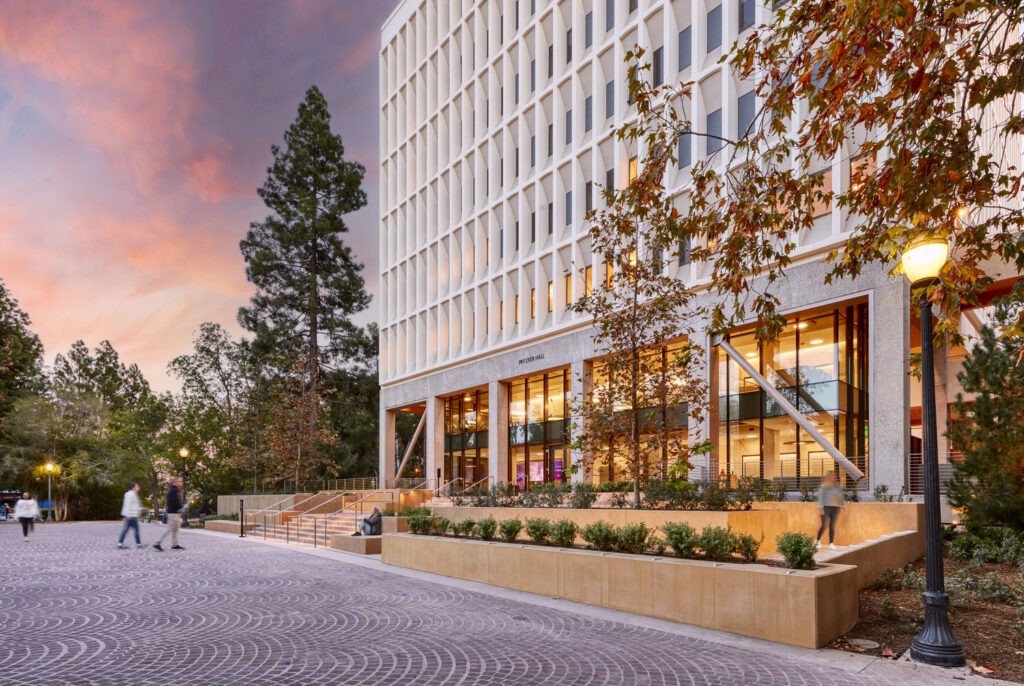Since the mid-1980s UCLA has systematically addressed the seismic safety of its existing campus building inventory. One of the more prominent campus buildings that was determined to be seismically deficient was Pritzker Hall, formerly Franz Hall. This historic eight-story reinforced concrete building, designed by the prominent Los Angeles architect, Paul Williams, was built circa 1967 and houses the Psychology Department. Detailed seismic evaluations assigned a seismic rating of SPL V to the building under the University of California Seismic Safety Policy, which did not meet the minimum acceptable rating of SPL IV. To bring this building into compliance with the Seismic Safety Policy and support a new generation of students through an extensive program renovation, the UCLA Pritzker Hall Seismic Renovation project utilized advanced analysis techniques, an extensive materials testing program, and integration of fluid viscous dampers installed in sympathy with the noteworthy architectural features.
The age of the construction inherently presents a lateral resisting system (consisting of perimeter concrete walls at the basement and concrete frames above grade) that lacks adequate detailing for a ductile seismic response. Preliminary retrofit schemes, developed by another firm, incorporated conventional strengthening approaches, including the addition of exterior braced frames or moment frames. The initial project scope as envisioned by UCLA was the selection and implementation of one of the preliminary schemes. Recognizing that such a retrofit would have significantly impacted the architectural nature of the building, as well as presenting significant cost, construction duration, and disruption to ongoing research within the building, the project team explored potential retrofit alternatives that would work in concert with the existing architecture and alleviate negative impacts.

The prominent façade consists of tightly spaced, uniquely profiled concrete beams and columns that support the gravity load from the exterior structural bays. The primary deficiency identified in prior seismic evaluations was an apparent shear failure at the beam/column joints, colloquially referred to as the “fin column” and “ledge beam” system, initiating at extremely low drift ratios on the order of 0.1% to 0.25%. Recognizing that this conclusion was based on existing ASCE 41-13 component models that were developed for conventional concrete frames with larger dimensions and spans than those occurring in this building, we hypothesized that the inherent redundancy from the numerous columns and the potential for load sharing between the ledge beams and the interior waffle slab floor system would significantly enhance the ductility of the system, and accommodate drift ratios on the order of 1% or more at the collapse prevention performance objective. As the specific details could not be precisely modeled with existing ASCE 41 guidelines, and a literature search did not reveal any prior research into similar structural systems, our team identified the “knowledge gap” between the analytical models and the intuition, and conceived of a component testing program to test this hypothesis and develop a better model of the seismic response of the façade structural system, thereby bridging the knowledge gap and supporting the development of a more elegant seismic retrofit solution.
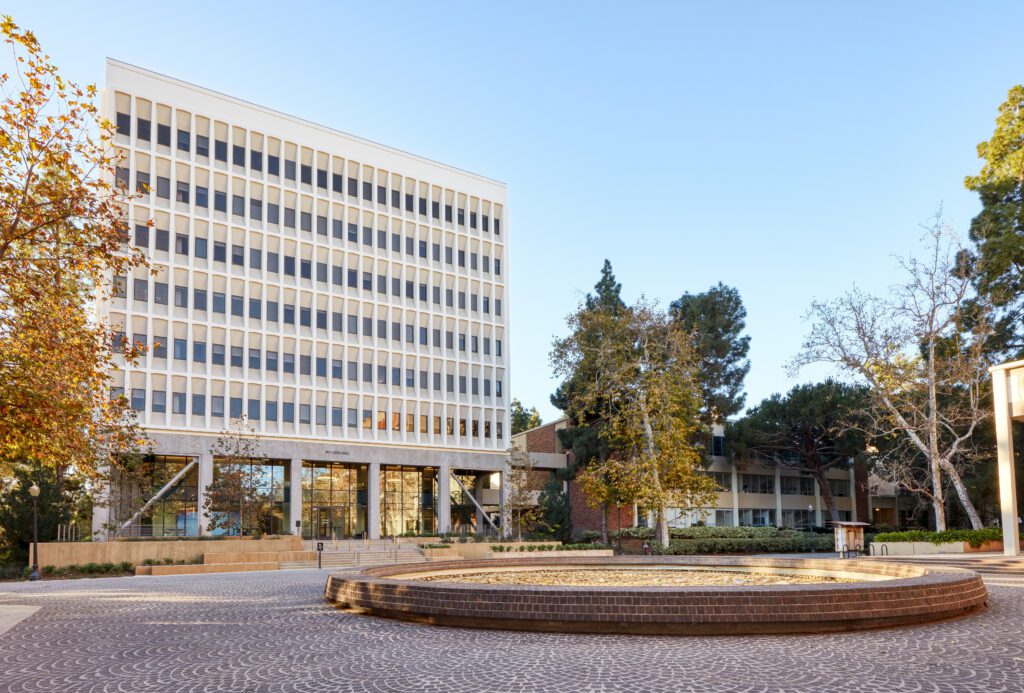
The component testing program was developed in collaboration with Dr. John Wallace at UCLA, and consisted of the construction and testing of 2/3 scale component models to explicitly determine the deformation capacity of the façade structure. The specimen was designed by Dr. Wallace, and PhD Candidate Ellie Moore with the UCLA Civil and Environmental Engineering Structural Design and Testing Laboratory, and constructed by PCL Construction’s Special Projects Group. The test specimen was based on a location at the base of the tower where fixity imposed by the large transfer girder resulted in the highest deformation demands on the system. The final test specimen included five columns, extended vertically for one and a half stories and included one-half of an interior floor framing bay. Inclusion of the interior bay was critical to impose the appropriate rotational restraint on the columns for out-of-plane deformations, and to simulate the load sharing between the ledge beams and the waffle slab gravity framing. Gravity and overturning axial demands were applied to the columns by a system of actuators while biaxial lateral deformations were imposed on the specimen. A figure-eight displacement pattern was utilized, with increasing displacement amplitudes applied on each cycle. The tests were conceived to be conducted until a loss in axial capacity was realized in the columns, however the tests were eventually limited by the lateral displacement limitations of the actuators and no loss of vertical capacity was observed in the testing.
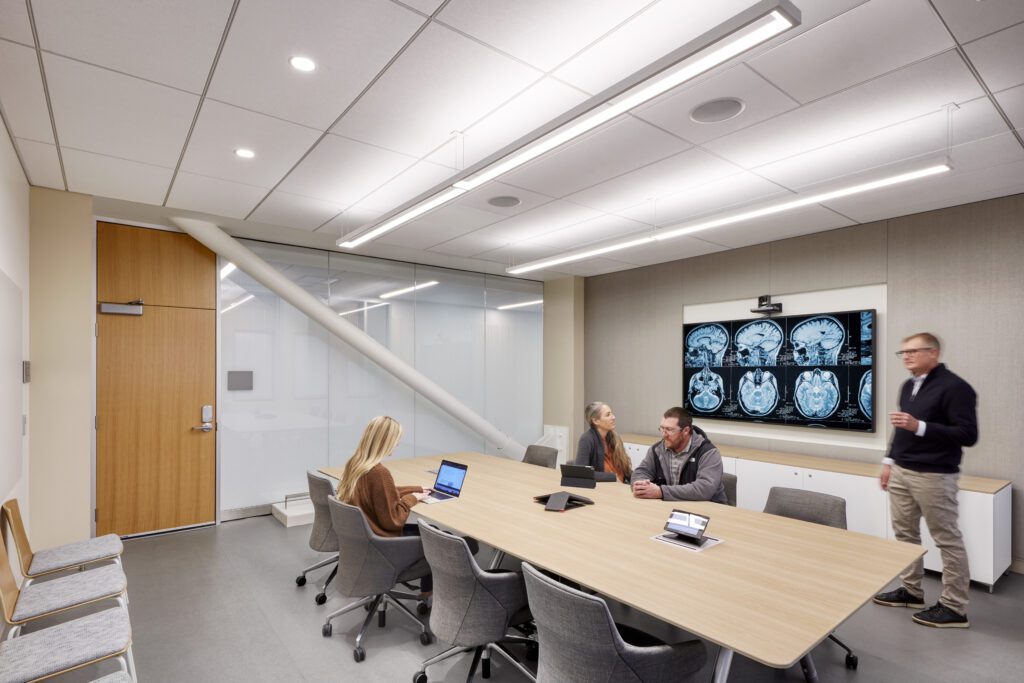
Upon completion of the testing program, the instrument data was used to develop hysteresis loops that were further distilled into a backbone curves for the façade components. The resulting data successfully bridged the “knowledge gap” by showing a nearly tenfold increase in allowable deformation at the Life- Safety and Collapse-Prevention performance objectives. Preliminary 3-dimensional nonlinear analytical models were refined through incorporation of the experimentally derived backbone curves. Analysis was performed with Perform3D software using the nonlinear dynamic procedure in ASCE 41-.-13. GeoPentech conducted a site-specific seismic hazard analysis to obtain seven pairs of ground motion records representing a uniform hazard spectra for 225 year (20% in 50 years), 475 year (10% in 50 years), 975 year (5% in 50 years), and 2475 year (2% in 50 years) return-period earthquakes.

The nonlinear analysis demonstrated that the addition of supplemental damping was an effective means to reduce interstory drift to the order of 1% to 2% at the 475 year and 2475 year return-period earthquakes representing the BSE-1N and BSE-2N hazard levels. As these drift levels were comfortably under the Life Safety and Collapse Prevention limits derived from the experimental results, the retrofit objective was set at achieving a SPL III rating under the UC Seismic Safety Policy through the introduction of supplemental damping. Analysis also demonstrated that a limited number of interior columns required the addition of confining FRP wraps to meet the required ductility demands.
The damping system developed for the project utilized fluid viscous damper devices installed in-line with steel drivers placed on primary grids between beam and column joints. Analysis demonstrated that the addition of four damper devices per floor from grade to Level 6 effectively limited the building drifts sufficiently to meet the SPL III rating objective. At the lower levels, dampers were implemented in discrete locations at the building perimeter, while dampers on the upper stories were located on interior grid lines and incorporated into a full interior remodel designed by CO Architects. Meticulous attention was given to details that subtly reveal the presence of the dampers while seamlessly integrated into the building architecture. Most notably, the exterior braces were connected to the structure using a discrete, bespoke picture frame gusset plate conceived by CO Architects, demonstrating their high level of attention to design details. The remodel also included opening the original lobby into a two-story space by removing a portion of the mezzanine level. The overall retrofit scheme was designed to minimize the impact on the exterior and historical aspects of the building, and preserving maximum usable space in the interior.
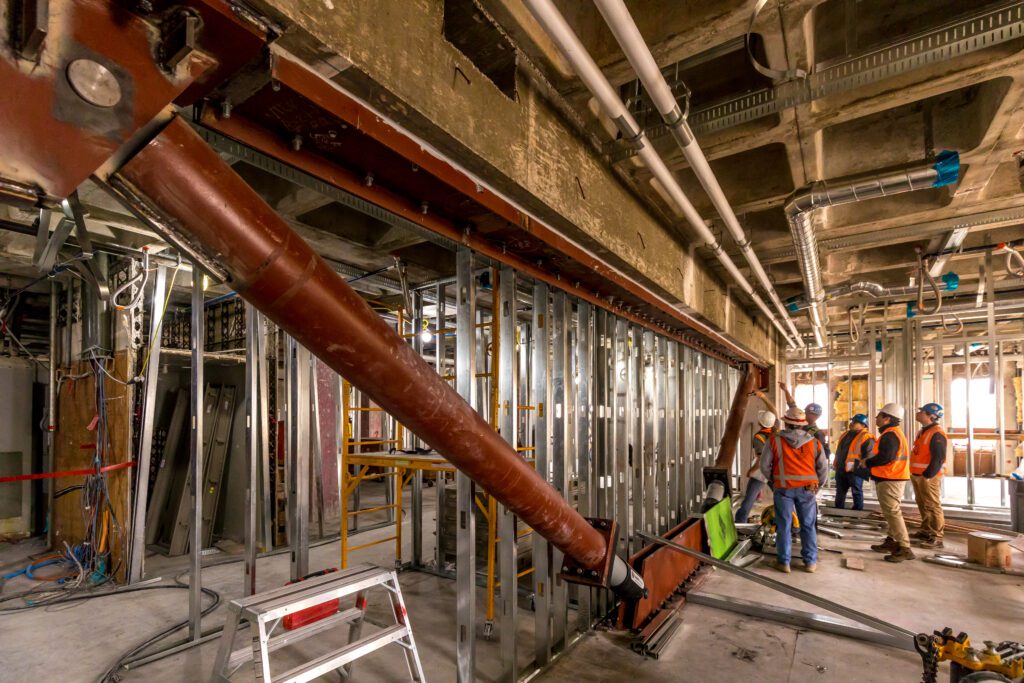
Our collaboration with Rudolph and Sletten, the general contractor, included an early procurement package for the viscous damping devices, which were manufactured by Taylor Devices. The project team understood that the lead time for the dampers, estimated at six months, was a critical path that needed to be addressed as soon as the testing phase was complete. Additionally, the retrofit scheme minimized the number of attachment points to the structure in order to reduce vibrations that could disrupt ongoing research within the basement levels which would remain occupied. Extensive preconstruction investigations helped ensure that unforeseen conditions were minimized and the high level of attention on detailing and the commitment from all of the team members to deliver a great final product resulted in smooth construction and installation.
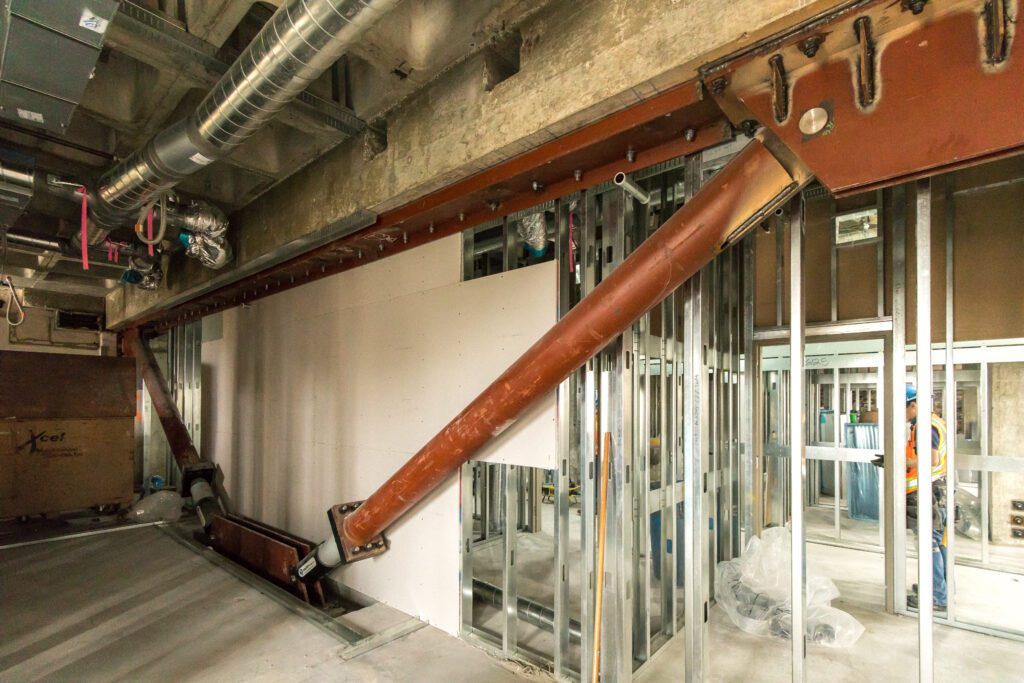
The preservation of this architectural gem is inherently the most sustainable outcome for the UCLA campus. The ability to continue using an existing building significantly reduces the use of new materials, waste from demolition, and develops a sense of place for the students on campus. The retrofit scheme required only 20 new bracing elements which minimized the introduction of new materials and the carbon emissions associated with the manufacture and transport of major structural elements, and particularly with the introduction of new concrete. In addition to preserving a part of the campus culture, the cost savings and construction schedule improvements demonstrate that this retrofit scheme successfully integrated new research, nonlinear analysis and viscous damping technologies to provide another 50 years of service for this campus landmark.

